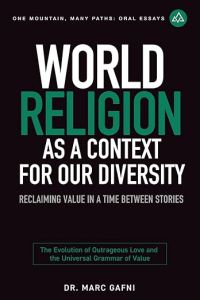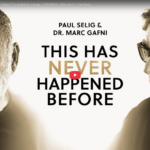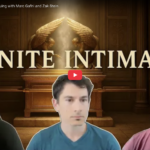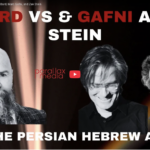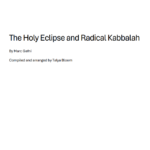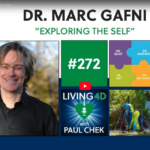Integrity, Spiritual Teachers, and a School for Integral Spirituality by Integrales Forum
A position paper by Integrales Forum
Introduction
The Integral Forum has set itself the goal to discuss and apply the integral approach within the German speaking community as it has been developed by Ken Wilber and others. In doing so co-operations and partnerships have been developed and are being developed with organizations and individuals including spiritual teachers. These teachers are themselves subjects of public discussion that range from approval to very critical. Against this backdrop, the Integral Forum Board of Members has often been asked again and again and recently even more increasingly how we view our relationship to spiritual teachers and how we deal with the criticism of these teachers.
Based on this background and applying an integral approach we have prepared the two following articles.
Their purpose is:
- to clarify and outline our position on this subject
- to set a standard for our own (also spiritual) work
- to promote discussion and exchange with spiritual teachers
- to serve as a starting point for discussion with an interested public
- to help bridge the gap between humanistic disciplines, their applications and spirituality
- to be an example for an applied integral spirituality.
With the first article, Towards a School and Science of an Integral Evolutionary Spirituality, a philosophical framework is provided within which the discussion can take place. It particularly highlights theoretical questions in which different positions in theory can also have different ethical implications. For example a theoretical disregard of the Relative as related to the Absolute can practically lead to an ignorance and presumptuousness in a practice of the Absolute ignoring the practice towards humanity itself and finally result in spiritual arrogance. The second article, Enlightened Spirituality — A Checklist for Spiritual Teachers with Respect to Competence, Integrity, Responsibility and Transparency, then offers concrete criteria with which spiritual teachers but also their critics can be evaluated.
We would herewith like to make a contribution for discussions based on humanistic and scientific principles concerning just what (integral) spirituality (or evolutionary spirituality, or awakening, or ….) could be by including those that represent it and are involved in its practice in one form or another. This position paper is therefore to be understood as a first step in entering a dialog concerning the topic of a spiritual ethic with respect to teaching and practicing against the background of a culture in which spirituality does not yet have an enlightened and socially recognized tradition. Through our publications and events, our aim is to learn together and most of all in our dialog with spiritual teachers — also internationally ‑ to assist in the emergence of an (in the western sense) “enlightened” spiritual culture. We have encountered great support through our numerous dialogues while preparing this position paper. We are well aware of the fact that the systematic as it is introduced in the second article can lead to irritations. Can we, or are we even allowed to approach, measure and evaluate such a topic as spirituality (and their representatives) based on the recommended (or even other) criteria? Our answer to this question is a definite “yes” and of course we apply these standards to ourselves first and foremost. In other words, if spirituality is to find its way into the community (including the scientific), then it (and its representatives) must submit to scientific discourse which primarily concerns humanistic disciplines. (In many discussions on this subject, the scientific approach has been equated with natural sciences and the encounter of science and spirituality limited to measuring brain waves of mediators and the comparison of quantum-physical descriptions with the Ground of All Being).
We are looking forward to this “integral” discourse.
Integral Forum Board, May 2010
Towards a School and Science of Evolutionary Spirituality
1. The western Age of Enlightenment, with its rejection of all dogma and unquestioned assumptions and power hierarchies, also eliminated religious myths. In the process the baby was unfortunately thrown out with the bathwater and the mystical treasures of human heritage were discarded; those treasures that protect the eternal truth of our being and that therefore cannot be subjected to the expiry date of relative truths. However, these eternal truths are declared by people who are in turn shaped by their personal development and psychology, by their physiology and behavior, by their communities and cultures, and by the social systems of their times. There is no “truth” that is separate from the one who voices it.
2. The spiritual vacuum that the Age of Enlightenment left in its wake is partially filled by an esoteric market of the arbitrary in the postmodern where serious spiritual seekers find little guidance. Magical and mythical forms of spirituality often mix with personally influenced doctrines of salvation that are not subject to quality standards of any kind and that challenge our spiritual intelligence as well as the legacy of the Enlightenment.
3. An integral understanding of spirituality enables us to clearly differentiate between the eternal truth of Being that is not effected by evolution because it is beyond time and not of time (acc. to Wilber “horizontal enlightenment”) and the development of Spirit from the One to the Many towards an ever increasing consciousness and love, depth and complexity (acc. to Wilber “vertical enlightenment”). An enlightened spirituality takes both aspects of enlightenment into account: the absolute and timeless aspect of emptiness and the relative and evolutionary aspect of higher development and then connects both to each other. Emptiness and Form are One in a nondual understanding (and its attainment). Due to the fact that Form develops in time, we need the best possible map of knowledge dealing with the development of Form. This map can provide an orientation as to how we can become an ever more conscious and loving part in the evolution of the ONE through the MANY.
4. With integral theory (and practice), Ken Wilber, along with others, have created an extensive concept for such a map that not only takes the absolute but also the relative side of enlightenment into account and shows how they work together in the lives of people and communities. Important distinctions in his model of integral spirituality are the results of comparative studies showing positive as well as negative experiences of spirituality put into practice and its consequences. With the help of this model, it should be possible to counteract the formation of spiritual shadow/undesirable developments and/or unhealthy absolutisms.
5. The following differentiations and suggestions appear to be of great importance to us for the development of an enlightened spirituality (critical about itself) and should serve as a basis for cooperation of teachers and schools of thought with respect to an enlightened spirituality.
5.1. Being and becoming, understanding and wisdom-based actions
An integral (evolutionary) spirituality is nondual and takes the Absolute and the Relative into consideration, Eternal Being as well as the manifestation of the One in the process of becoming. This requires a practice that allows both aspects to develop.
5.2. Integral Life Practice
The wisdom traditions present a multitude of paths and methods to realize the Absolute (e.g. contemplation and meditation). The Relative also provides several ways and examples that comprise at least practices for body, psyche and shadow as well as spirit and understanding.
5.3. Eros and Agape, transcend and include
One of the most important insights belonging to an evolutionary spirituality is a knowledge of the principles of development. The development of structures in the process of transcending and including leads to an ever increasing depth, to ever increasing developmental horizons and to higher complexity. A healthy development retains and protects the achievements attained in former developmental levels and adds new qualities to them. Any kind of one-sidedness in either one of the developmental dimensions encourages fragmentation, fundamentalism and pathologies. Should one only “include”, then transcendence is thwarted from stage to stage. Should one only “transcend”, then that which was before is split off and not added to the new developmental stage. Spiritually the aspects of inclusion and transcendence could also be defined as Eros and Agape. Agape represents love from the higher to the lower which includes that which was in each new level and cleans and refines it. Eros represents the energy and drive involved in evolution that brings each individual and culture to ever more consciousness, beauty, goodness and truth. Eros and Agape are the masculine and feminine faces of God or the ONE in its manifestation.
5.4. The Unique Self: unity of absolute self and individual self
Transcending and including also affects the relationship of the personal and absolute/transpersonal. The aspect of transcendence means that we recognize the transpersonal Absolute or Being which allows us to live in freedom from this world and yet with it freedom in the world. The aspect of inclusion recognizes that we are not just the embodiment of Spirit but also human, and not just any human but a very specific unique human being that actualizes the Absolute in unique ways in time and space as an individual. Included in this are those human pre-conditions as already mentioned, found in psychology, psychodynamics, behavior, cultural conditioning and social involvement of which we should become ever more conscious within the context of our spiritual development. Seen in this way Enlightenment then means to be one with all that is and to achieve the highest degree of humanness that is possible in our time. This humanity is cosmocentric, i.e. the care for the worldcentric aspect of all mankind (human rights) is expanded to include all sentient beings in the Kosmos. Cosmocentric can always be seen as “human rights plus” and never as “human rights minus”.
5.5. I, WE, IT: The three faces of God
A further, important integral insight is the difference in the development of the Kosmos between I, we and it/its. Development takes place in interiors and the exteriors, individually and collectively. All dimensions must be taken into consideration and here it is important to avoid fundamentalisms, too. Such an absolutism in spiritual areas would be in this case an overemphasis of a higher “I”, a higher “we” or a higher “it” as an example. These (at least) three faces of God should have their place in an integral understanding in order to avoid reductionism and absolutisms. We can experience the I AMness, the first person of God (along with all the difficulties that being an individual can bring). In the interpersonal sphere, concretely in the other person, as well as in humility before that which is greater than ourselves, we experience the YOU ARE as the second person of God (along with all the difficulties that communities and fellowship bring), and in the things of the outer world that surround us we discover the IT IS as the third person of God (next to all the difficulties that the “things of life” cause us).
5.6. Spiritual teachers, schools and their common culture
Spiritual teachers, groups and practitioners should be aware of the path of enlightenment and the two types (vertical and horizontal). Students and teachers need to know their strengths and areas where development is required. Most of all teachers have a particular responsibility and should only teach in those areas in which they are competent. Especially those teachers claiming leadership or authority, be it spiritual, economic or political, should pay particular attention to openness, transparency and honesty.
This also includes knowing your own limitations and referring students to other teachers and professionals when faced with topics and questions that require more competence in other areas such as therapeutic counseling, educational issues, medical counseling and questions of an economic or technical nature.
A teacher should be more advanced than his students but these must also be able to “grow beyond” their teachers. In contrast to premodernity, the teacher or guru today is not a sovereign or ruler who is accountable for all questions concerning the life of the group. Within the complexity of the modern and postmodern living, it is important to optimally take advantage of the multitude of intelligences/competencies available. Integrally informed teachers are therefore in a position to handle their individual strengths and weaknesses in the different areas of their lives responsibly and are able to communicate this with an interested general public.
5.7. The tasks of a new school and science of enlightened spirituality
As with other teachers, spiritual teachers also need a possibility for competent exchange with teachers at the same level – or of higher developmental levels – to reflect on their own personality and work. A school for enlightened spirituality in the sense of the points described above could be a starting point. Awakened integral and evolutionary spirituality is still in its beginning phases — theoretically and practically. The process of individual development as well as initial signs of an enlightened culture of spirituality are taking place in an intellectual, social climate in which awakening as well as enlightenment have a bad reputation.
Reasons for this are the postmodern arbitrariness of principles, modern consumerism with one-sided materialistic values and the existence of a strong connection to traditional spirituality and premodern values and (authoritarian) structures. With the return to premodern traditions, traditional values are often unquestionably accepted which discredits them (and rightly so) as far as — in the western sense — “enlightened” individuals are concerned and presents a barrier in their quest for spiritual awakening. It is then all the more important that an enlightened school of spirituality helps to re-establish the eternal truths of premodernity but frees them from conformist structures. Such a school retains the best of tradition, modernity and postmodernity and can herewith contribute to an end of existing cultural ‑ including spiritual — conflicts.
These theses should provide the beginning of a peer-to-peer dialog or a transconfessional community of spiritual teachers and organizations that respond to the call for an enlightened spirituality.
Integrales Forum Board of Directors and DIA — The Integral Academy, May 2010
Enlightened Spirituality
A Checklist for Spiritual Teachers with Respect to Competence, Integrity, Responsibility and Transparency
Within the last few decades a new job description has arrived on the scene: that of a spiritual teacher.
If you google “spiritual teacher” in the internet, more than 146,000 hits for the German masculine form “Lehrer” or 165,000 hits for the German feminine form “Lehrerin” appear (on April 12, 2010). Even if a single person is not behind each entry, this shows how many people view themselves as belonging to this category.
This definition goes hand-in-hand with the assumption that they have teaching and leadership skills (a spiritual teacher is someone who can show the way to others on a spiritual path and it is taken for granted that they possess an above average competence to do so). In this article we want to investigate what special qualities define a spiritual teacher and how they can be determined. Our aim is to stimulate critical reflection by examining quality criteria which can in turn help avoid future instances of abuse and misconduct of spiritual teachers by applying rational, comprehensible principles that bring the spiritual and moral niveau of the western Enlightenment into the realm of spirituality instead of completely ignoring these issues, which the mainstream often does. We are of the opinion that true spirituality is the baby that was thrown out with the bathwater of religion. Out of this arises the impulse and the obligation at the same time to reveal those treasures of wisdom which spiritual traditions developed. However, we should not fall back into a non-critical “New Age” fashion below the niveau of modernity but rather must pass the expectations found in a (fundamental) rational legitimization on to spiritual teachers. This not only leads to principles or (ethical) guidelines as they are often found in many professional groups and which are taken for granted, but also to ways and means of examination and testing.
One problem doing this is that interior competences (including spiritual ones) cannot be openly demonstrated as easily as would be possible with craftsmanship for example. Whether or not a carpenter can build a table can be tested by any lay person, just as a hearing test can tell you if a pianist can play the piano. But this is different with spirituality. We are dealing with inner qualities that can only be determined indirectly, foremost by and through the spiritual teacher himself and then by all sorts of external evaluations by others. Mistakes are possible in both cases and in certain cases even unavoidable. This should present no reason, however, not to evaluate (which is done anyway, even if just unconsciously) and tackle an issue. Based on the rapid development in human sciences such as phenomenology, psychology, psychodynamics and (developmental) structuralism in the last hundred years, we now have reliable options at our command to examine human interiorities and make them comparable.
To get this discussion going, we would like to suggest a few criteria (the sequence is not relevant) from an integral standpoint that should apply to spiritual teachers. An important perspective is the teacher himself and how he perceives himself and his work, what is his self-image and self-assessment? Equally as important is the exterior perspective on the teacher and his work. How do others define what it is that constitutes a spiritual teacher and what he does?
1. Self-disclosure
a) phenomenological competence
b) psychological transparency
c) biographical transparency
d) philosophical-scientific competence and transparency (teaching)
e) own practice
2. External assessment
f) organizational transparency
g) what does the spiritual teacher do?
h) dialogical engagement
i) companions
j) public opinion
Explanation
Refer to a:
Spirituality consists mainly of inner experiences that have a particular, namely “spiritual” character. Spiritual teachers should be able to provide sufficient and ongoing information concerning what they have experienced and realized during the course of their consciousness development. These accounts can then be compared to the great wealth of experiences found in the wisdom traditions and of other contemporaries. (A classical account of this type is the “The Interior Castle” by Saint Teresa ). In this way an important side-effect is that spirituality can be viewed as a phenomenological human discipline and possibly be better accepted in the circle of scientific academia.
Refer to b:
At the latest since Ken Wilber differentiated the path of enlightenment through state-stages and through structure-stages of development (with the possibility at each stage of dissociation and shadow formation), it has become clear that spiritual insights (state experiences) do not necessarily go hand-in-hand with psychological insights or a high stage in terms of structural development. The cases of teachers having a high spiritual development but a poorly developed character are legion. Therefore it is important that spiritual teachers are personally aware of who they are and how they work and are able to communicate this with an interested public. One possibility to do this is with a “psychograph” that can reveal the different competences and their development in cognitive, self, moral (values) lines for example based on a corresponding model and psychometric methods of developmental psychology[1]. In addition, the spiritual teacher can provide information concerning shadow dynamics that he has discovered and worked on himself. Zen master Genpo Roshi also reports how the Big Mind Process helps in integrating the dual and nondual voices. Information from the teacher concerning topics such as power, misuse of power, teacher-student relations and authority can be just as revealing.
Refer to c:
The biographical background of a person does not necessarily determine his future but it can reveal certain factors. Even spiritually enlightened people remain individuals with a story. Where does the teacher come from, what has he experienced, who is important for him and what methods and theories have had an influence on him? It is to be recommended that a spiritual teacher make information available concerning his view towards his own development and biography. Of interest are difficult life phases and/or crises and how they were coped with. Just as interesting are insights and self reflections concerning mistakes, new understandings and learning processes.
Refer to d:
What does the teacher teach (even the comment “I have no teaching” is a teaching)? What is it based upon — which insights — and what type of ’hard’ science or humanistic disciplines and methods can support and confirm the teaching? Which methods and practices were used to gain these insights and how can they be tested? Is the teacher part of a lineage or tradition (such as Zen for example) and has he been authorized by his tradition or his own teachers to teach or is he self-named and self-authorized? Disclosing the teaching and its origin is an essential aspect when discerning the quality of a teacher. In this way the teaching can be compared with the teachings of other teachers and science — in a broad understanding of this term – in general.
Refer to e:
What does the teacher do for his own further development and in-depth development of consciousness? What information is available concerning his own practice (including the conviction: “My consciousness development is perfect and complete.”)?
Refer to f:
Spiritual teachers often establish organizations or create communities with students they have taught. They are not responsible for everything that happens within these communities or what their individual students do, but looking at that is often a reflection on the teacher who is directing it.
Certain questions become very interesting within this context such as:
- How is the community organized? Is it transparent or obscure?
- What are the rules (rules of order) and procedures?
- How do you become a member and how do you leave?
- How do they handle money, how is the organization financed?
- How does the spiritual leader finance his livelihood?
- To what extent is the organization dependent on /independent of the spiritual teacher?
- How large is the organization?
- Is it possible and foreseen within the context of the organization that the spiritual teacher can be “surpassed” in his spiritual competence and what consequences would that have?
- Which great students did the teacher accompany in their growth and was he able to let them go on their own?
Refer to g:
What a spiritual teacher does and his behavior is the easiest to recognize and serves as an important source of information for those interested. How he responds to others is of particular interest. How does he deal with students, with former students, with sympathizers, with opponents and critics? How large is the sphere of influence of the teacher and who benefits from it? Do people come to harm? What do students and participants in seminars report of their experiences with the teacher? In a wider sense, all publications belong to that area of what a teacher does.
Refer to h:
Discussions or debates with those of different opinions also belong to dialogical engagement. Dialog partners that come into question are:
- other spiritual teachers
- students of the teacher
- the public in general including the media
Of particular importance is the dialog and interaction with critics.
Refer to i:
Close friends of the spiritual teacher are important sources for information as they know the teacher and accompanied him along his way. The spectrum ranges from enthusiastic students of many years to other spiritual teachers with whom the teacher is in dialog and cooperation and even to those who have left and have become critics.
Refer to j:
Public opinion and how this is presented in the media concerning a teacher is also an important source of information. Even here the spectrum ranges from positive and affirmative to negative and hostile. This contributes to the overall picture as well.
Summary
We are living in a time in which the one-sided materialistic worldview is becoming more and more stretched by a much needed inner and spiritual dimension. Spiritual teachers play a decisive role in this expansion. This is not only important but very positive. At the same time spiritual insights do not automatically result in insights concerning other areas of life or give insights into a teacher’s own personality. Therefore it is necessary and advisable to take a closer look at the capabilities and competences of a spiritual teacher. This occurs in the interest of the teacher himself, in the interest of the students and the interested public as a whole. A teacher who is transparent with himself, his students and followers as well as the public can be trusted unreservedly and this serves as a basis for a healthy student-teacher relationship. Training, even spiritual training, can be multifaceted, from nice and friendly to uncompromising consequences and severity. What is sometimes seen from the outside as strange teacher behavior can often be exactly the right thing in a specific situation and for a specific person in order to wake up. The ritual “slaps” that are often dispensed in Zen are an example of this. Most decisive of all is from which understanding (small/big Mind) and which motivation (small/big Heart) the intervention of the spiritual teacher is coming form. It must be possible in any case to question conventional as well as unconventional teaching styles.
For the spiritual learning process to be a success, it requires trust and “commitment” on behalf of the student as well as a voluntary self obligation to development by submitting himself to the guidance of the teacher of his own choice. The teacher and student should reach an agreement concerning the goals and steps of the developmental process which can be referred to in any conflict and updated during the course of the process. The path of spiritual development, i.e. transcending the ego, is seldom a piece of cake. The teacher must provide competence, integrity and transparency. The student always retains responsibility for himself, must however be ready to submit himself to or follow the teacher in order for a teacher-student relationship to develop. The teacher has a special responsibility for himself, for the student and the entire relationship.
In spite of its existence for more than several thousands of years, spirituality (or religiosity) has not yet managed to be taken seriously by the scientific mainstream. This lies in part with the blindness of the mainstream when exposed to spiritual insights which, according to our opinion, is nothing more than a form of humanistic knowledge, and as such principally open to scientific research as they are established in experimental reconstructable experience — within a community of well-informed practitioners — empirically verifiable and falsifiable. It also has to do with modern spirituality and representatives who often make a secret out of what they know, do and are. They place themselves outside of and above any evaluation and discussion. They often have (as a backlash) a low opinion of science (for them merely a product of the mind) which is according to their opinion rather part of the problem instead of part of the solution. This often results in a complete hostility towards rationality itself which is neither differentiated nor contemporary. Qualities such as transparency, willingness to dialog, openness and a scientific approach can lead to more clarity and trust.
A school of enlightened spirituality calls for these qualities and forms a competent community in which teachers further their development together. Clear criteria and situation-oriented applications require an awareness and consciousness of the teachers and their understanding, mindfulness and responsibility towards their students. These qualities have an effect on how spirituality is understood by the wider public and open the way for a truly integral embrace of a comprehensive science and an enlightened spirituality Рbeyond dogma, naivet̩, blind faith, fantasies of omnipotence and ethical-moral misdeeds.
Integrales Forum Board of Directors and DIA — The Integral Academy, May 2010
[1] An example of a self-development profile is the SCTi Test as offered by Dr. Cook-Greuter, see www.cook-greuter.com/SCTi-MAPForm.htm
With Responses by

We live in a context where many of us have outgrown traditional forms of religion. This means that pre-modern, ethnocentric versions of our world’s traditions no longer have the capacity to meet our modern and postmodern needs. The integrative space of a World Spirituality allows our great religious traditions to evolve from ethnocentric to world-centric, and even to kosmocentric consciousness. World Spirituality allows us all to move forward together, beyond the limitations of traditional religion, while still embracing all of the valuable insights and gifts of the past. That’s why we are delighted to invite you to World Spirituality Annual Practice Retreat of Love and Activism – Evolutionary Integral Relationships with Dr. Marc Gafni, Sally Kempton, Terry Patten, Warren Farrell, Decker Cunov, Dustin DiPerna, & Marcy Baruch, July 17th – 24th in Berkeley, California. Our annual practice retreat of love and activism is itself an example of World Spirituality practice: it is designed to engage you cognitively, inter-personally, physically, emotionally, and spiritually. We will employ a balance of theoretical and experiential, as well as individual and group, learning sessions–all woven together into a vital, comprehensive, and balanced awareness. We will also focus on helping you develop and strengthen your own World Spirituality practice. Each day will consist of deep engagement in dharma (spiritual teachings), practice, and experiential and relational exercises, including:
|






